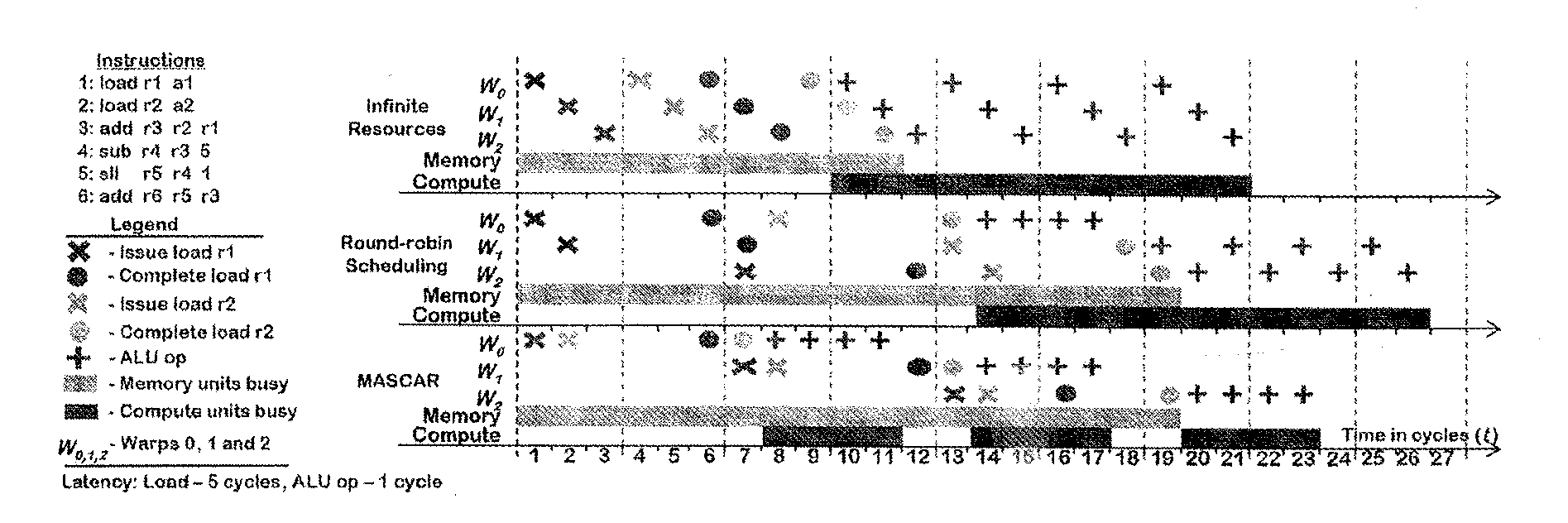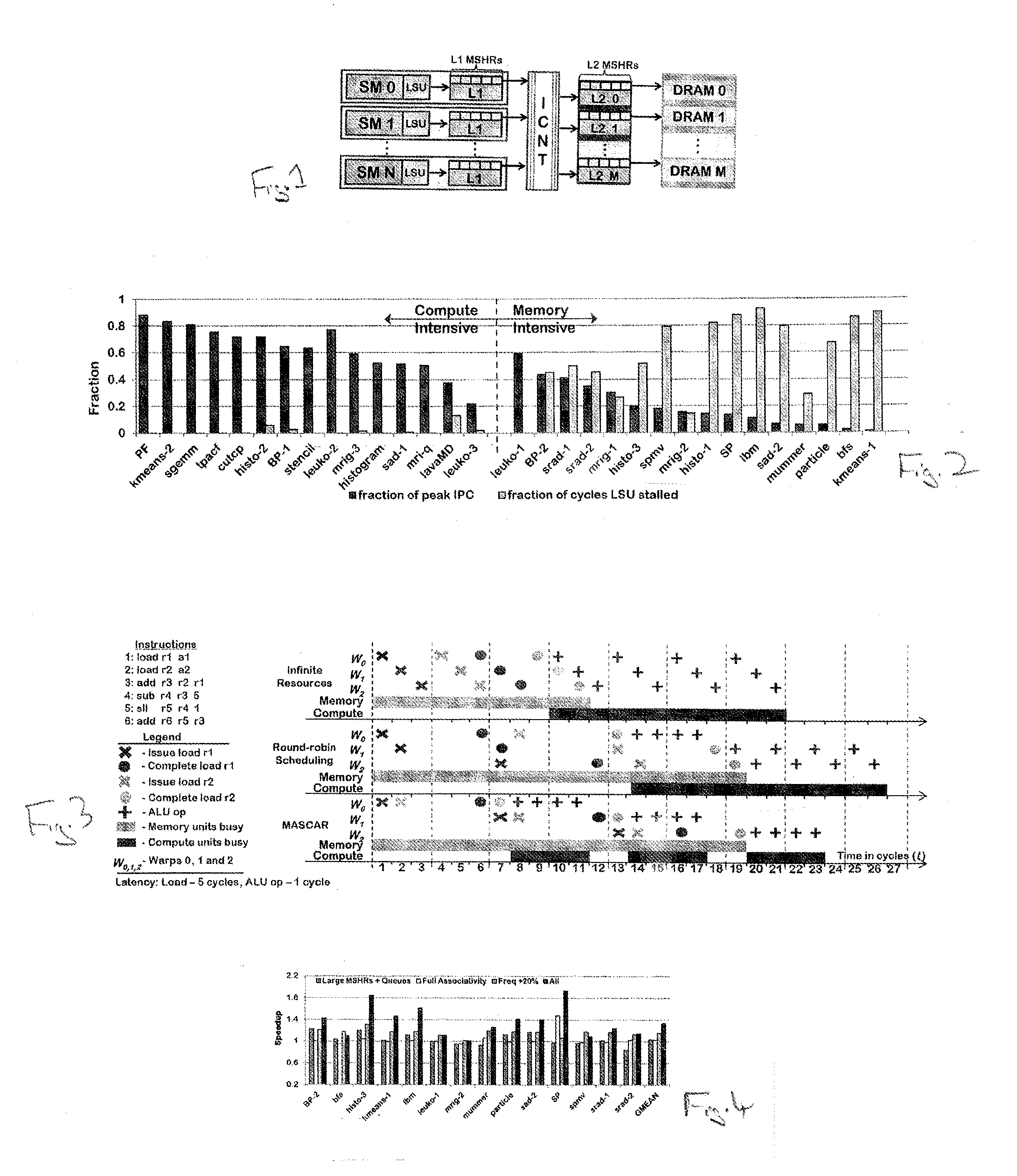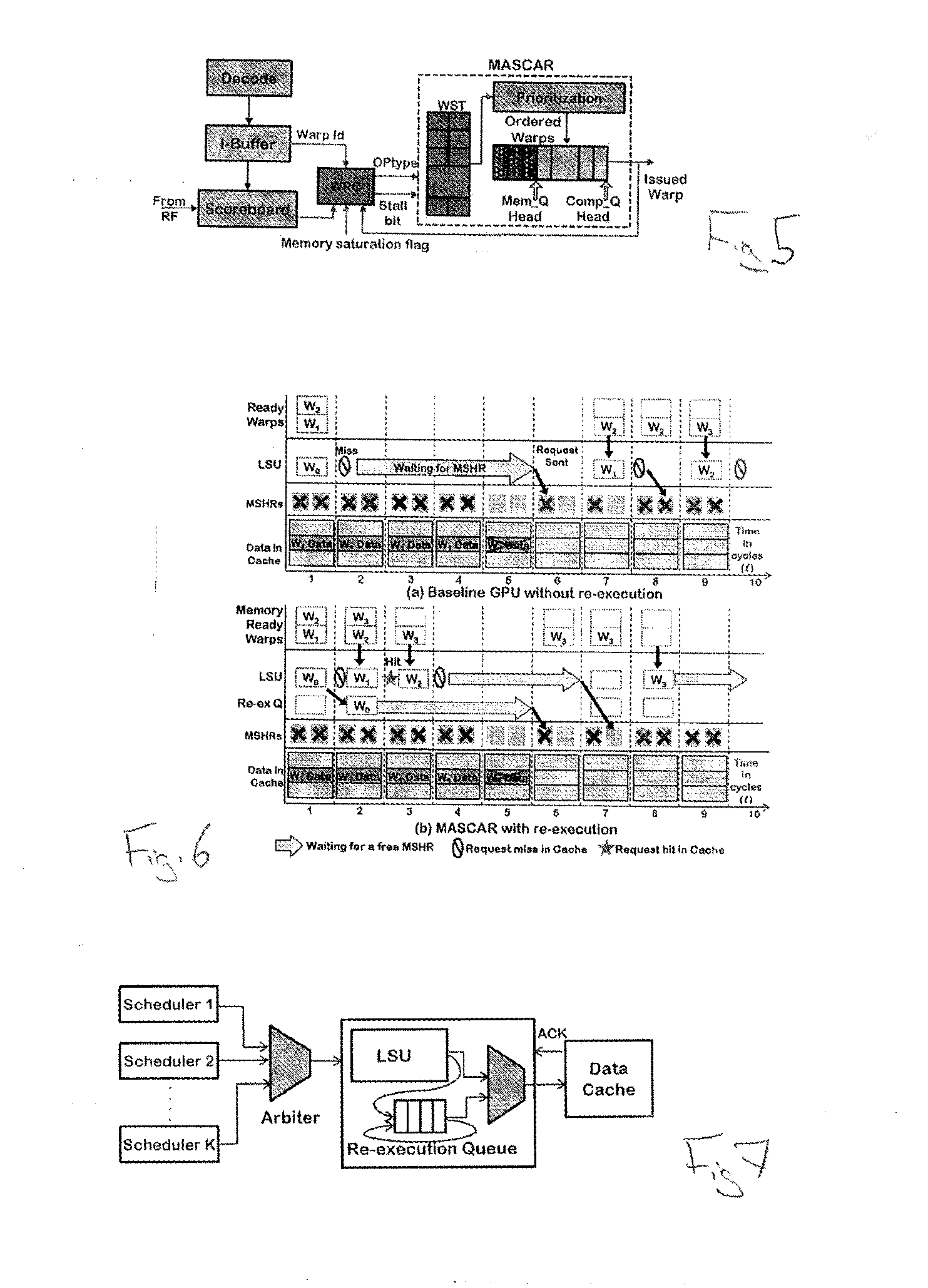Issue control for multithreaded processing
a multi-threaded processing and issue control technology, applied in the field of data processing systems, can solve the problems of serialized accesses, preventing achieving peak performance on these architectures, and often lacking computation in programs to hide the long latency of off-chip memory accesses
- Summary
- Abstract
- Description
- Claims
- Application Information
AI Technical Summary
Benefits of technology
Problems solved by technology
Method used
Image
Examples
Embodiment Construction
[0030]The warp scheduler present in a GPU's Streaming Multiprocessor (SM) plays a pivotal role in achieving high performance for memory intensive workloads, specifically by prioritizing memory requests from one warp over those of others. While recent work by Jog et al. has shown that scheduling to improve cache and memory locality leads to better performance, the role of scheduling is not limited to workloads which have data locality. Scheduling is also important in improving the performance of many memory intensive workloads that do not exhibit data locality. In the case of compute intensive workloads, varying the scheduling policy has little to no significant impact on performance.
[0031]The following discloses Memory Aware Scheduling and Cache Access Re-execution (MASCAR) to better overlap computation and memory accesses for memory intensive workloads. The intuition behind MASCAR is that when the memory subsystem is saturated, all the memory requests of one warp should be prioriti...
PUM
 Login to View More
Login to View More Abstract
Description
Claims
Application Information
 Login to View More
Login to View More - R&D
- Intellectual Property
- Life Sciences
- Materials
- Tech Scout
- Unparalleled Data Quality
- Higher Quality Content
- 60% Fewer Hallucinations
Browse by: Latest US Patents, China's latest patents, Technical Efficacy Thesaurus, Application Domain, Technology Topic, Popular Technical Reports.
© 2025 PatSnap. All rights reserved.Legal|Privacy policy|Modern Slavery Act Transparency Statement|Sitemap|About US| Contact US: help@patsnap.com



